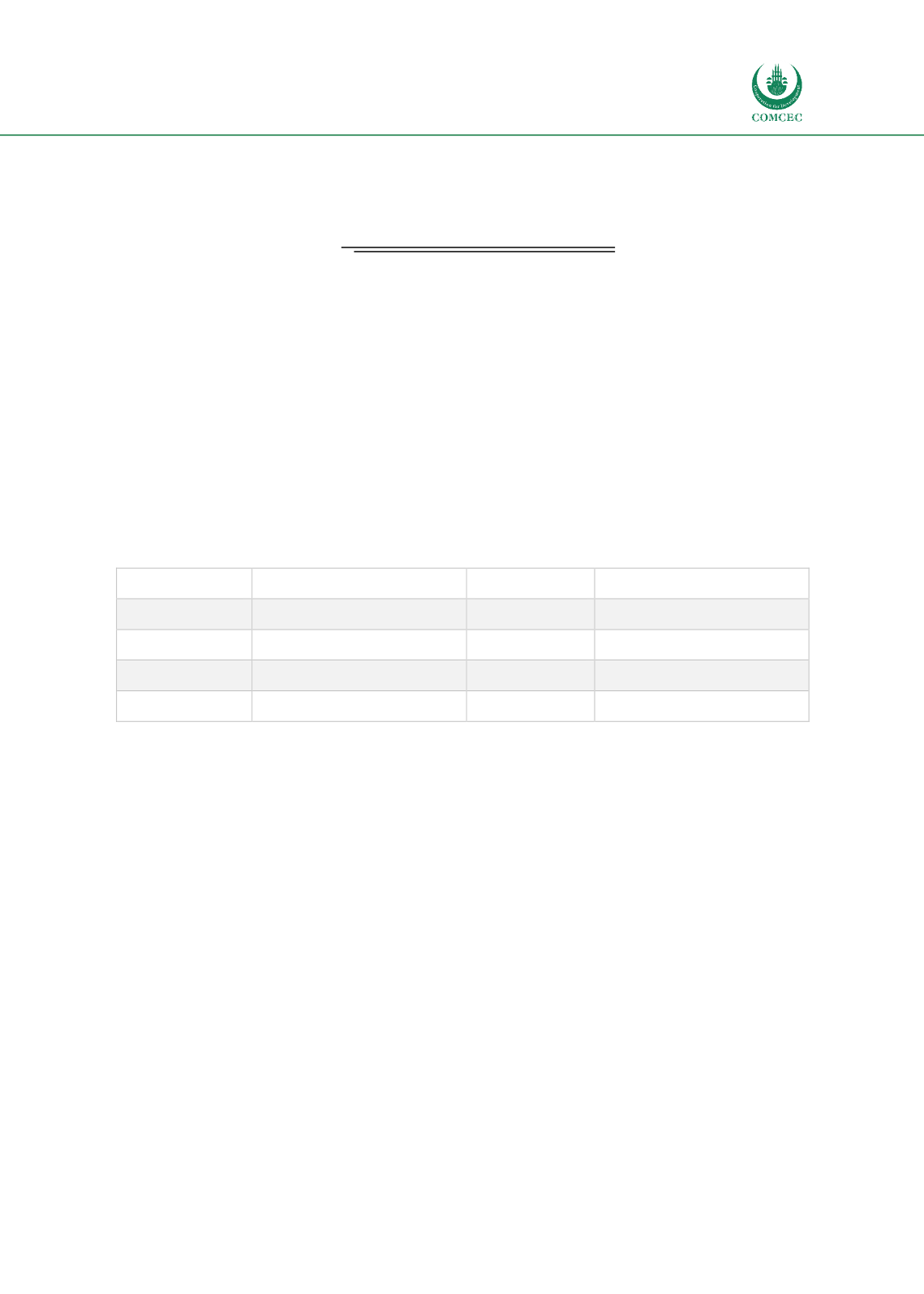

Improving Customs Transit Systems
In the Islamic Countries
119
Due to the numerator of this formula being covariation of X and Y, statisticians consider it
inconvenient to use and prefer the following computational formula:
=
∑ − (∑ )(∑ )
√[ ∑
2
− (∑ )
2
][ ∑
2
− (∑ )
2
]
Pearson’s coefficient has values between -1 and 1. The 0 value of this coefficient implies that
there is no association between the variables, while +1 and -1 imply total positive or total
negative association among variables. The positive correlation means that if one variable
increase (or decrease) also the second variables with which the first one has a correlation
increase (or decrease). The negative correlation implies that an increase in one variable will
decrease the second variable and vice versa. Of course, in the reality the results of these analysis
are between 0 < r < +1 and -1 < r < 0 for which there is no direct implication.
Different authors present a different interpretation of these values.
Table 47presents the
interpretation of this coefficient grouped in a few intervals used in this research.
Table 47: Interpretation of the coefficient of correlation r
r > 0
Interpretation
r < 0
Interpretation
0,4-0,49
Low correlation
0,4-0,49
Low correlation
0,5-0,69
Medium correlation
0,5-0,69
Medium correlation
0,7-1
Strong correlation
0,7-1
Strong correlation
1
Perfect correlation
1
Perfect correlation
Source: authors' own compilation
Conducting the correlation analysis, we want to check the influence on the trade costs of
different variables related to CTR. All variables that have a correlation with the average trade
costs according to ESCAP database have a negative correlation, which means that higher scores
in these variables influence the reduction of trade costs. For example, there is amediumnegative
correlation
(Figure 27)between trade costs and TFI A.08 (Required documentation easily
accessible for downloading) and TFI B.24 (existence of established guidelines and procedures
in place, governing the public consultation process). Also, medium negative correlation
(Figure 28)exists between trade costs and LPI International shipments (-0.556) and LPI Infrastructure
(-0.548). Therefore, the better infrastructure quality and easier arrangement of competitively
priced international shipments will decrease the trade costs of the country. The next medium
negative correlation exists between trade costs and timeliness (-0.532) as a part of logistics
performance index (LPI), and full-time availability of automated processing for Customs
declarations (-0.516) as a part of TFI
(















